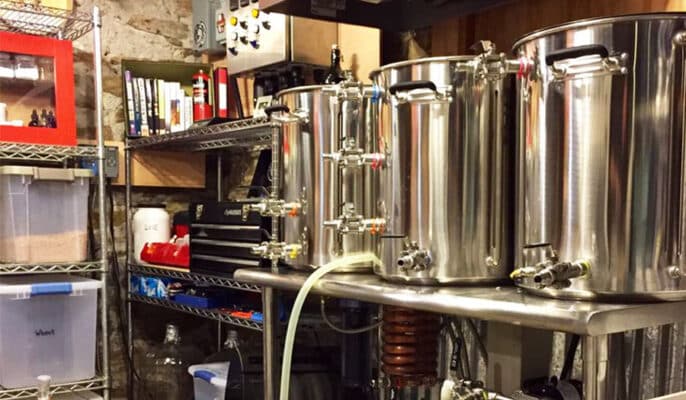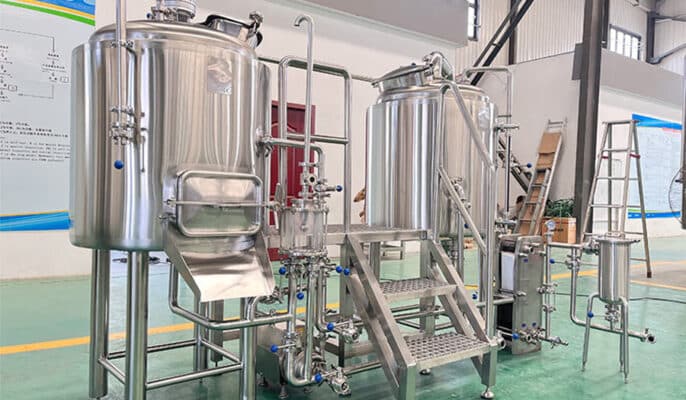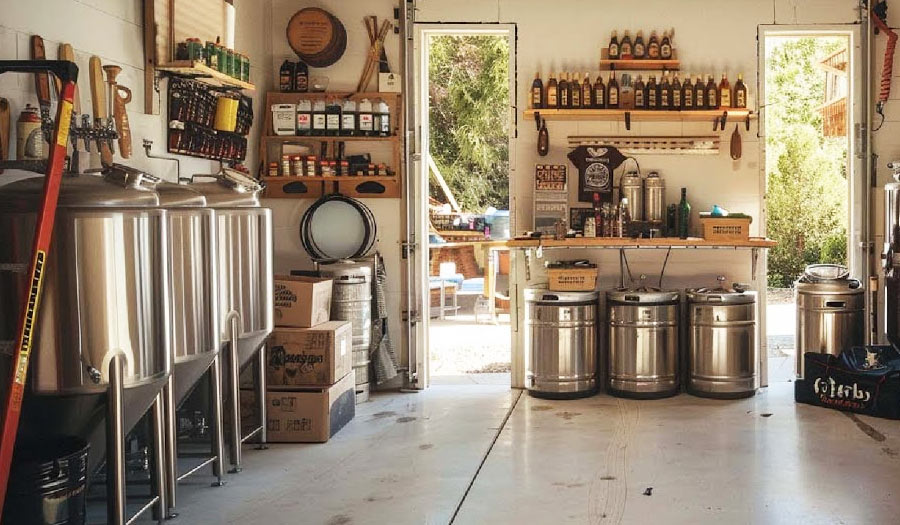Home brewing machines are becoming increasingly popular in the beer brewing industry, offering various features to cater to the preferences and budgets of different brewers. Brewing your own beer, wine, or other beverages at home is not only an exciting hobby but also an art that combines creativity and science. In this era of rising DIY culture, home brewing has become a popular choice for many seeking personalized drinks. This guide will help you understand the types of home brewing equipment and how to choose the right one, allowing you to embark on your brewing journey more effectively.
The Rise of Home Brewing
Over the past few decades, as consumers increasingly seek high-quality and unique flavors, many have begun to explore the joys of making their beverages. The popularity of beer, in particular, has made home brewing a favored activity. The rise of social media and online communities has provided enthusiasts with platforms to share experiences and ideas, making home brewing more widespread. Through forums, video tutorials, and social networks, beginners can easily access information, avoid common mistakes, and enhance their brewing skills. Additionally, the increase in brewing competitions and tasting events encourages home brewers to showcase their creations and interact with fellow enthusiasts.
The rise of home brewing not only reflects people’s pursuit of beverage quality but also embodies a desire for creativity and a personalized lifestyle. With advancements in technology and an abundance of resources, home brewing is sure to attract even more participants in the future, becoming an indispensable part of everyday life.

Typy Zařízení pro domácí vaření
Basic Equipment
- Fermentační nádrž: Home stainless steel fermentation tanks are essential in modern home brewing, valued for their durability and efficiency. These tanks are typically made of food-grade stainless steel, effectively resisting corrosion and grime, ensuring that the brewing process does not affect the taste and quality of the beverages.
- Brew Kettle: Brew kettles come in capacities ranging from several liters to hundreds of liters, suitable for various brewing scales. Stainless steel brew kettles are designed with functionality and ease of use in mind, often equipped with heating elements, thermometers, and built-in stirring devices to help brewers better control temperature and mixing. Most models also feature a faucet for easy liquid transfer and filtration after boiling, simplifying the process.
- Chiller: A home chiller is an indispensable part of home brewing equipment, especially when brewing beer and wine, as quickly and effectively lowering the liquid temperature is crucial. The main function of a chiller is to rapidly cool the liquid after boiling, ensuring that yeast can ferment at an ideal temperature, which significantly affects the final flavor and quality of the beverage.
Pomocné vybavení
- Temperature Controller: A temperature controller helps brewers accurately monitor and adjust the temperature during fermentation. Temperature directly impacts yeast activity and the final flavor of the beverage, making stable temperature maintenance key to successful brewing. Using a temperature controller can significantly increase brewing success, especially during seasonal changes or unstable weather.
- Bottling Equipment: Bottling equipment plays an essential role in home brewing, helping brewers safely transfer their creations into bottles and ensuring the quality of the beverage. Whether manual or automatic, appropriate bottling tools can enhance the brewing experience. The right bottling equipment not only improves efficiency but also ensures the quality and hygiene of the drinks.
- Cleaning Tools: Home cleaning tools ensure the hygiene of equipment and containers, preventing contamination and undesirable fermentation. Keeping brewing equipment clean effectively prevents cross-contamination, reduces interference from bacteria and wild yeast, and enhances brewing success and beverage flavor. Additionally, regular cleaning can extend the lifespan of equipment, ensuring a smooth brewing process.
Types of Home Brewing Machines
Different types of home brewing machines are available to suit the needs of everyone from beginners to experienced brewers, helping them create unique homemade drinks.
|
TYP |
POPIS |
BEST FOR |
|
Kegerators |
Refrigerated units designed to store and dispense kegs of beer. |
Those who want to store and serve commercial kegs. |
|
Homebrew Kits |
Comprehensive kits that include everything needed to brew beer from scratch. |
Homebrew enthusiasts and DIYers. |
|
Beer Dispensers |
Compact machines that use pre-packaged beer capsules. |
Casual drinkers looking for convenience. |
|
All-in-One Brewing Systems |
Advanced systems that handle brewing, fermenting, and dispensing. |
Serious homebrewers and craft beer aficionados. |

Home Brewing Steps
Materials Preparation
- Malt: Choose the appropriate malt (such as barley or specialty malts).
- Hops: Used to enhance bitterness and aroma.
- Yeast: Select the suitable type of yeast.
- Water: Use a clean water source.
Tools Preparation
- Large pot
- Fermentation bucket (with airlock)
- Teploměr
- Oxygen meter (optional)
- Bottles and caps
Brewing Steps
1.Make the Wort
- Heat Water: Heat the water to about 65-70°C.
- Malt Steeping: Add the malt to the water and maintain the temperature for 1 hour to extract sugars.
- Filtering: Separate the wort from the spent grains to obtain clear wort.
2.Boiling
- Boil the Wort: Bring the wort to a boil and maintain for about 60 minutes.
- Add Hops: Add hops at different stages of the boil to achieve varying aromas and bitterness.
3.Cooling
Cool the Wort: Use a chiller or ice water to quickly reduce the wort temperature to about 20-25°C.
4.Fermentation
- Pitch Yeast: Pour the cooled wort into the fermentation bucket and add the yeast.
- Seal Fermentation: Seal the fermentation bucket, ensuring the airlock is functioning properly to prevent air from entering.
5.Secondary Fermentation (Optional)
Conduct secondary fermentation in the fermentation bucket to improve clarity and flavor.
6.Bottling
- Prepare Bottles: Clean and sanitize the bottles.
- Add Sugar: Add a suitable amount of sugar to the bottles to aid in secondary fermentation and carbonation.
- Bottle the Beer: Pour the beer into the bottles, leaving some space, then cap them.
7.Aging
Store the bottled beer in a cool place to age for about 2-4 weeks.
8.Enjoy
Chill the beer, and it’s ready to be opened and enjoyed!
How to Choose the Right Home Brewing Machine?
- Scale: Determine the quantity of beer you want to brew to select the appropriate pot and fermentation bucket capacity.
- Materials: Stainless steel pots and glass fermentation buckets are more durable and easier to clean; plastic containers, while lower in cost, can scratch easily and affect longevity.
- Accessories: Ensure you have the necessary tools such as thermometers, airlocks, and funnels to support the entire brewing process.
- Budget: Choose equipment based on your budget; beginners can start with basic kits and upgrade gradually.
- Ease of Use: Select equipment with good user reviews to ensure it is easy to operate and clean, maintaining good hygiene.
How to Find the Right Supplier?
- Online Search: Use search engines to find local or online brewing equipment suppliers, carefully browsing their product range and customer reviews for comprehensive information.
- User Reviews: Read customer feedback in-depth, focusing on product quality, after-sales service, and purchasing experience to assess the supplier’s reputation and reliability.
- Community Recommendations: Join online communities or forums for brewing enthusiasts and actively interact with other brewers to ask for their recommended suppliers and equipment.
- Price Comparison: Compare prices and product features across multiple suppliers to ensure you choose equipment with a good cost-performance ratio that meets your needs.
- After-Sales Service: Understand the supplier’s after-sales support and return policies to ensure timely service and effective assistance for any potential issues after purchase.
ČASTO KLADENÉ DOTAZY
Are home brewing machines suitable for beginners?
Yes, many home brewing machines are designed for beginners, featuring simple operation and detailed usage instructions along with recipe guides.
How long does the brewing process take?
The brewing time depends on the type of beverage being made. Generally, it may take 2 to 4 weeks from start to final product, depending on fermentation and aging times.
Is cleaning and maintenance easy?
Most home brewing machines are designed with ease of cleaning in mind and typically only require warm water and detergent. Regular cleaning is essential to maintain equipment hygiene.
What is the most important factor when choosing a home brewing machine?
The most important factors include capacity, materials, ease of use, and budget. Ensure that the equipment you choose meets your needs and skill level.
What capacity should I choose for brewing equipment?
Capacity generally depends on how much you plan to brew at once. Beginners can opt for a 5-gallon (approximately 19 liters) machine, which is suitable for home consumption.




